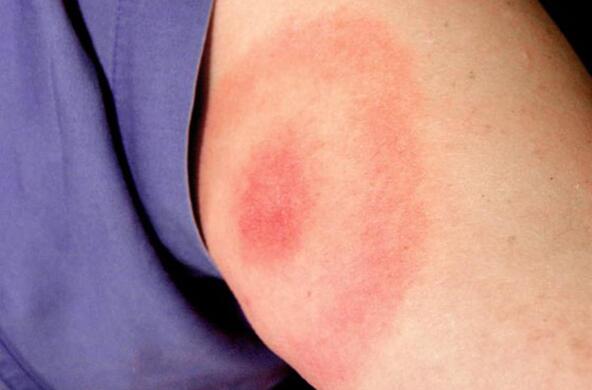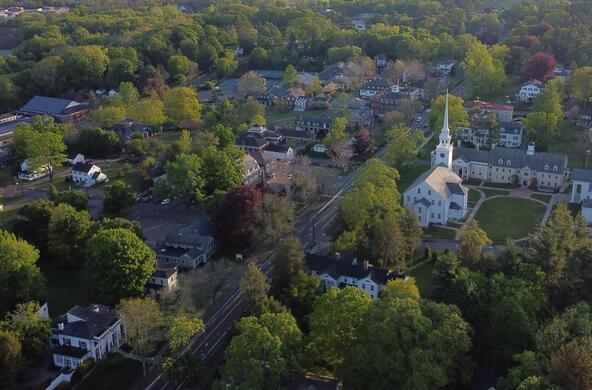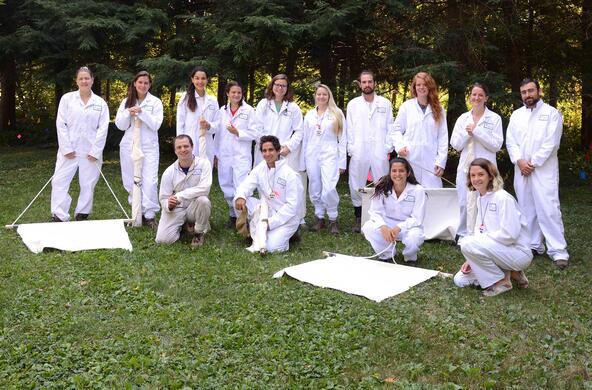Dutchess County and four other mid-Hudson Valley counties have the nation's highest rates of Lyme disease, an illness transmitted by the bite of a tiny — and insidious — tick.
An exclusive Poughkeepsie Journal analysis of state and federal data shows:
- Dutchess County had the highest number of reported Lyme cases -- 6,407 -- nationwide from 2002 to 2006, the latest period for which federal figures are available.
- Columbia ranked first nationwide in the proportion of Lyme in the population, or per-capita, rate; Dutchess, Greene, Putnam and Ulster counties placed second, third, sixth and eighth, respectively. Orange was 11th.
- Though current Lyme rates by county are not available nationwide, state data for the top 10 Lyme counties previously show Columbia and Greene counties in first and second in 2010. Dutchess and Ulster fell from the top 10.
"This is something we need to take extremely seriously," said Dr. Richard S. Ostfeld, a disease ecologist at Cary Institute for Ecosystem Studies in Millbrook. "It's an enormous public-health issue."
Lyme disease is caused by the bite of a black-legged tick, also called a deer tick. This year, there could be 50 percent more nymph ticks, the most threatening type, than in any of the past 21 years, Ostfeld's research shows. That's because of a bumper crop of acorns that swelled the ranks of white-footed mice; mice, not deer, chiefly infect the ticks that later bite people.
In its initial stages, Lyme disease can cause a red rash akin to a bull's-eye, joint aches, fatigue and fever. It is easily treated with a short course of antibiotics when caught early — a tricky proposition because ticks often are missed and symptoms dismissed. Later cases can be far more difficult, studies show.
"I was so desperately ill," said Jill Auerbach, 69, of the Town of LaGrange, who left work at IBM Corp. after suffering memory, speech and heart problems from advanced Lyme that, 15 years later, are better but can recur. "I really thought my life was over."
Doctors targeted
Treatment for such cases is complicated by a contentious debate in scientific and medical circles over the long-term use of antibiotics, which Auerbach said helped her. Many seriously ill patients say they have difficulty getting care, while doctors willing to give antibiotics in chronic cases have been targeted by state-licensing officials for treating outside of medical protocols.
"We have some doctors in New York state that have actually had success treating chronic Lyme patients (and) ... in some cases, they have been investigated," said U.S. Rep. Chris Gibson, a Columbia County Republican who hosted a conference on Lyme disease in May. "The state and federal government should recognize the controversy and push toward a resolution." (Please see Sunday's special report on the controversy over chronic Lyme disease.)
Lyme rates have soared nationwide in the past decade, rising 82 percent from 1992-96 to 2002-06 as the disease migrated from Lyme, Conn., where it emerged in 1975, to areas primarily north and west. More than 30,000 cases were reported nationwide in 2010, including 6,300 in New York. Early studies by the U.S. Centers for Disease Control and Prevention estimated the actual number nationwide may be three to 12 times higher, depending on varying reporting methods.
Reported Lyme cases in Dutchess actually declined 43 percent in the five years ending 2011, compared with the previous five years, while jumping 48 percent in Ulster. But because the population of infected ticks remains strong, experts theorize Dutchess physicians may be reporting fewer cases, which can be viewed as time-consuming and, said Michael Caldwell, county health commissioner, even pointless in a known endemic area.
Regardless of fluctuations, he added, "In Dutchess, it's always pretty much a bad Lyme year."
Other states with counties in the top 10 for Lyme rates nationwide were Connecticut (two) and Wisconsin (three). Only one other state — Delaware — had a county in the top 40 , while a quarter of them were in New York.
As Lyme spreads nationwide, New York counties likely will lose their unwelcome distinction at the top of the U.S. county rate list. But the changed ranking may be unrelated to disease incidence.
Starting in 2008, 18 counties, including the entire Hudson River corridor, began to report Lyme disease estimates under a process "developed to help ease the burden" — and heavy cost — of reporting on localities, said Jeffrey Hammond, a state Health Department spokesman. Officials use a complex formula that includes counting all cases in which the signatory rash was found and extrapolating from a random sample of others that have been verified for Lyme.
Cases uncounted
The Centers for Disease Control and Prevention does not accept estimates, creating an odd and worrisome paradox.
"Most of the counties that use the estimation process are the hardest- hit counties," Kiersten Kugeler, a CDC epidemiologist, wrote in an email to the Journal, "and therefore have lower numbers reported to CDC."
For example, New York state health officials reported a Lyme disease rate for Dutchess County in 2010 of 177 per 100,000 residents; the CDC's rate for the county is 50, said Kugeler, who released data regarding selected state counties at the Journal's request. Columbia's rate reported by the state was 623; the CDC rate for Columbia was 222.
The underreported data, which count perhaps a third of local cases, will make tracking the disease difficult and may undermine its urgency and funding, advocates fear.
"States that are highly endemic are going to start a downward trend" in numbers, but not cases, said Pat Smith, president of the Lyme Disease Association, a national nonprofit organization based in Jackson, N.J. "It's a paper drop, and it will impact any funding."
Caldwell maintained the labor-intensive counting process — involving two full-time staff members, since reduced to a half-time person — needed revision and expressed hope that any federal money to the state would be distributed by need.
"The state certainly knows we are a hot spot," he said.
To avoid Lyme disease, health officials warn that when going into backyards or woods, tuck socks into pants, wear light clothing, use repellents and avoid brushy areas. Frequent body checks are recommended, as is putting clothes in a dryer for 20 minutes after hiking or gardening.
With problems of diagnosis and disagreement over treatment, "the only thing we have in our bag of tricks these days is prevention," said Auerbach, the Lyme patient and chairwoman of the Hudson Valley Lyme Disease Association.







